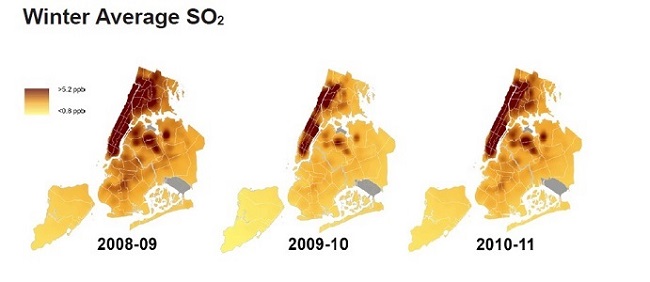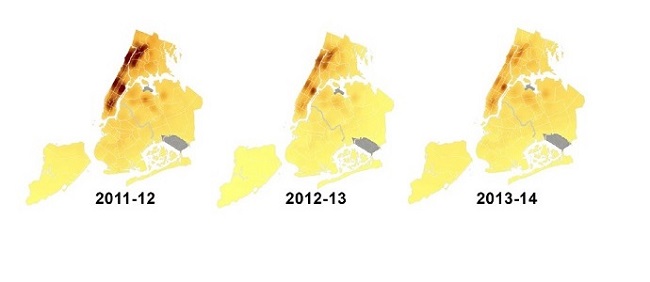Across the United States and in New York City, air quality has improved over the last 20 years as a result of measures implemented to meet Environmental Protection Agency (EPA) regulations. In 1990, the revised Clean Air Act allowed for the EPA to better enforce regulations reducing air pollutant emissions, limiting the degree of air pollutants across the nation. Nevertheless, air quality in New York City and many other metropolitan areas still does not meet clean air standards, while new scientific studies link air pollution to various public health issues including asthma, heart disease and certain cancers.
As part of the New York City environmental sustainability plan known as PlanNYC, several initiatives have been launched to reduce local emissions beyond the steps required by Federal and State regulations. PlaNYC acknowledged that better information was needed to understand how air quality varies between neighborhoods to better target and prioritize air quality improvement efforts in the future. As a result, The Barry Commoner Center for Health and the Environment and the New York City Department of Health and Mental Hygiene launched the New York City Community Air Survey (NYCCAS) in December 2008.
The NYCCAS program monitors pollutants that cause health problems such as fine particles, nitrogen oxides, elemental carbon (a marker for diesel exhaust particles), sulfur dioxide and ozone. NYCCAS air pollution measurements are taken at 100 locations throughout New York City in each season. Monitors are mounted 10 to 12 feet off the ground on public light poles or utility poles along streets and in some parks. The portable ambient air monitors use battery-powered pumps and filters to collect air samples.
The analysis of the monitoring data involves the use of statistical models, developing associations between measured pollution and sources near the monitoring sites such as traffic density or boilers in buildings. The NYCCAS statistical model provides estimates of air pollution concentrations across New York City.


